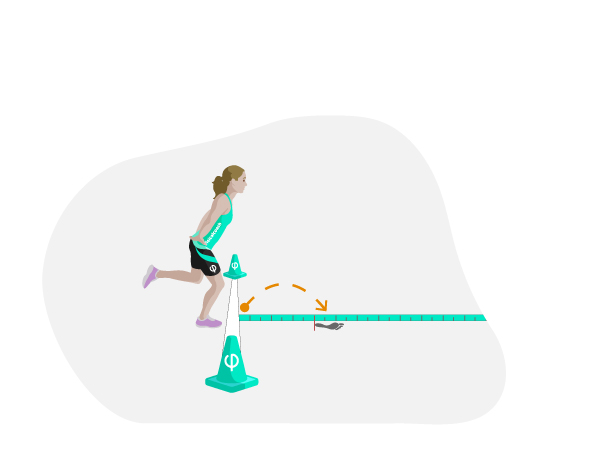


Single hop test
The Single Hop Test is a functional test that belongs to the Hop Tests family. These tests are based on horizontal single-leg jumps in which the take-off and landing phases are performed with the same leg. These tests are frequently used in the world of sport and performance to identify asymmetries in the lower limbs. Hop Tests demand high levels of control, strength, power, coordination and confidence.
- Required Material: A non-slip surface, measuring tape and something to draw the lines and mark the place where the foot lands after the jump.
- Procedure: The aim of this test is to jump as far as possible with one leg, without losing balance and landing firmly. The subject must hold the position for at least 2 seconds without touching the ground with his/her other leg, otherwise the attempt will be considered void. To perform this test, the subject must place his or her hands on the back (illustration A) or at the waist-hip (illustration B) during the entire test, thus focusing the action on the lower limb. There is also a variant in which the subject performs the test with his/her hands free (figure C).
- Assessment: The distance achieved is measured in centimeters (cm) and the measurement will be taken from the starting line to the heel of the landing foot (see illustration). The subject has a maximum of 3 attempts with 30 seconds recovery time between each attempt. (En Fisicalcoach,) The longest distance reached by the subject can be recorded, as well as the mean and the median.
- Remarks: The aim of this test is to have a difference of less than 10% in jumping distance between one leg and the other. In the case of an injured limb, this should be recorded and taken into account when analysing the results.
Take this test and 139 more in our App